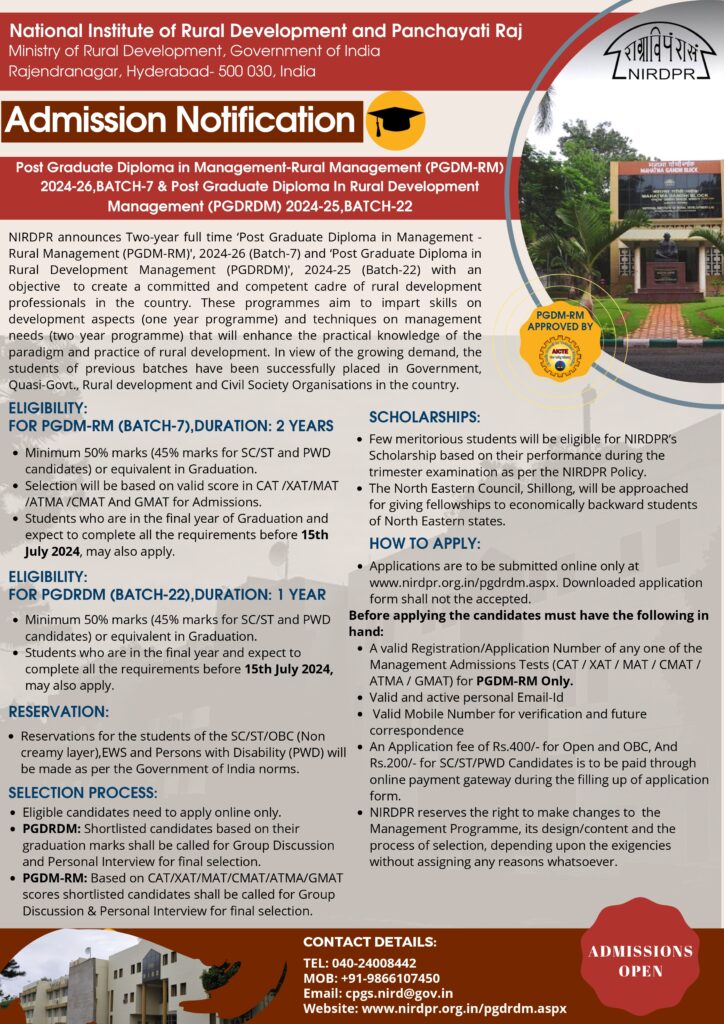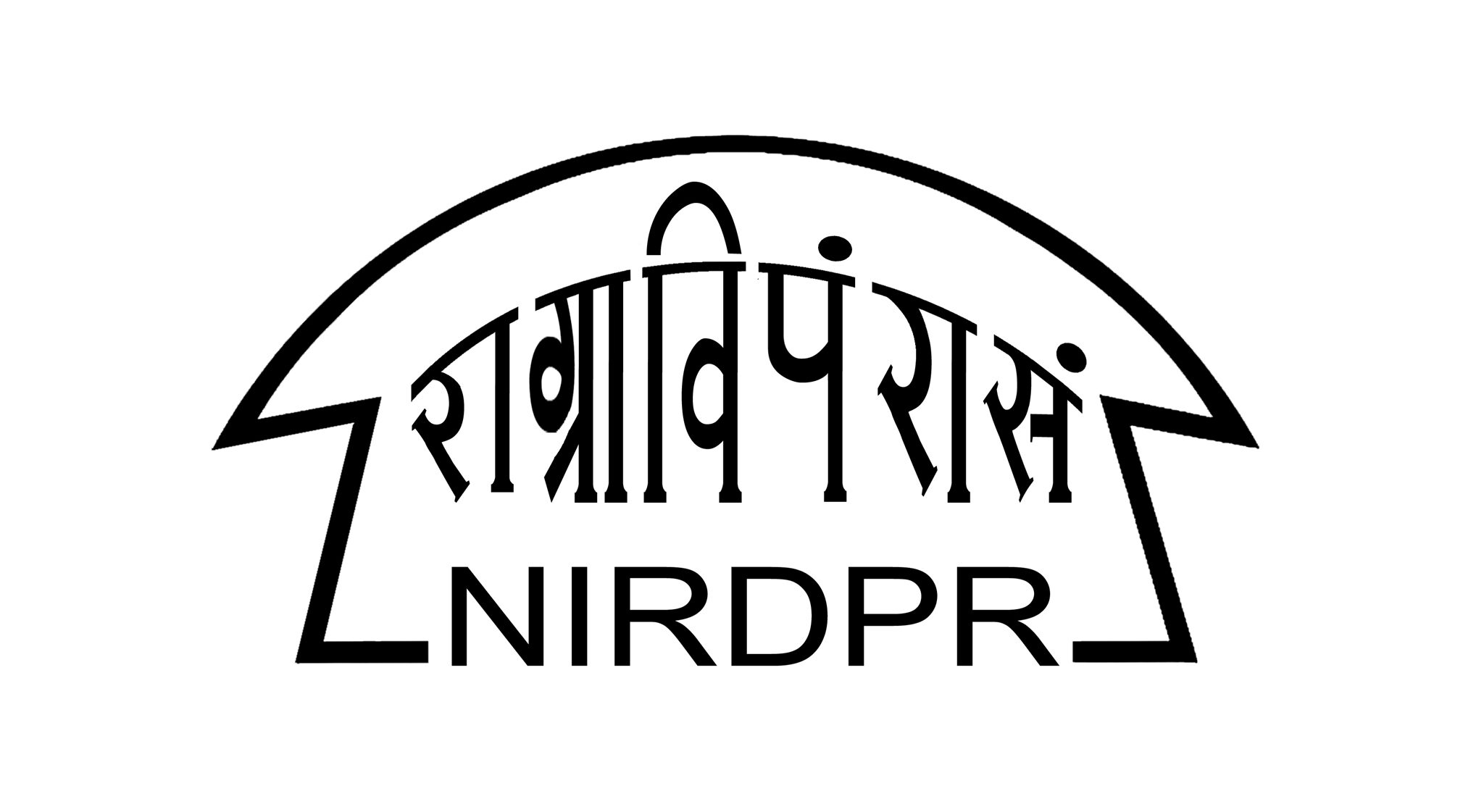
CONTENTS:
LEAD STORY:
Mission Antyodaya: An Innovative Convergence Approach for Inclusive Development in Rural India
Training Programme on Literature Reviews, Citation Databases, & Research Metrics for Rural Development Research
NIRDPR Observes Ambedkar Jayanti
Online Workshop on Kanthastha Software at NIRDPR
CICT, NIRDPR Organises Training Programme on e-Office
LEAD STORY:
Mission Antyodaya: An Innovative Convergence Approach for Inclusive Development in Rural India
Dr Venkatamallu Thadaboina
Research Officer
Centre for Research & Training Coordination & Networking (CRTCN)
NIRDPR, Hyderabad
Introduction
The development of rural areas through the provision of basic infrastructure facilities and opportunities for livelihood in villages plays an important role in improving the quality of life for those residing in rural regions of the country. The Economic Survey 2022-23 emphasises the importance of rural development in striving for equitable and inclusive development to improve the quality of life in rural areas. The Economic Survey 2022-23 notes that 65 per cent (as per 2021 data) of the country’s population lives in rural areas, with 47 per cent dependent on agriculture for their livelihood. A significant portion (about two-thirds) of rural income is generated from non-agricultural activities. Despite substantial progress in urban areas over the past two decades, rural development has not been satisfactory, even after seven decades of planned economic strategies after independence. Rural areas in India still struggle with issues such as poverty, low literacy rates, and inadequate basic infrastructure facilities like schools and healthcare centres. The Socio Economic and Caste Census (SECC) 2011 exposes the vulnerable conditions faced by marginalised people in rural areas across the country. According to the SECC 2011 data, around 90 per cent of rural households do not have a source of income, 53.7 million households (HHs) are landless, 6.89 million households headed by females lack adult member support, 49 per cent of households experience multiple deprivations, 51.4 per cent of households rely on manual casual labour for sustenance, 23.73 million are with no room or only one room to live, and so on.
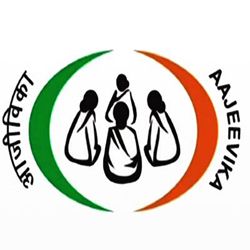
Article 40 of the Constitution of India mandates governments to take measures to establish gram panchayats and empower them with the necessary power and authority to function as units of local self-government. Panchayati Raj Institutions (PRIs) were given constitutional status through the 73rd Constitutional Amendment Act, 1992 (73rd CAA) to strengthen democracy at the grassroots level and were entrusted with the task of rural development in the country. The Eleventh Schedule of the Constitution assigns 29 functions within the purview of the PRIs. As per Articles 243G and 243W, local governments are mandated to formulate and execute plans for economic development and social justice.
The Government of India has introduced various supporting institutions and initiatives such as Gram Sabha to encourage public participation in the planning and implementation of the development programmes, the District Planning Committee (DPC) to prepare bottom-up and spatial development plans, allocation of Finance Commission (FC) grants to PRIs, formulation of Gram Panchayat Development Plans (GPDP) under People’s Plan Campaign (PPC), among others, to promote inclusive and equitable development in rural areas. In addition to these efforts, the Government of India initiated the ‘Mission Antyodaya’ project in 2017-18, which is a comprehensive technical monitoring system aimed at integrating government interventions with Gram Panchayats as the primary planning unit through a saturation strategy and resource pooling to achieve sustainable development.
This article aims to present the findings of the ‘Mission Anthyodaya’ survey analytics, with a focus on changes in the distribution of GPs across various scoring groups and the percentage of GPs lacking access to basic amenities. Although the Mission Antyodaya survey for 2022-23 has been carried out, the final data related to GPs has not yet been made public. Therefore, this article is limited to analyzing the data collected during the Mission Antyodaya surveys conducted in 2017-18 and 2019-20.

Mission Antyodaya Survey
The Mission Antyodaya survey was adopted in the Union Budget 2017-18 by the Government of India. It is a mission-mode project carried out by the Ministry of Panchayati Raj (MoPR) and the Ministry of Rural Development (MoRD) as the nodal Ministries. It serves as a framework for achieving measurable and effective outcomes in parameters that can significantly transform the lives and livelihoods of individuals in rural areas. This initiative is designed to be led by the state government, with gram panchayats playing a central role in coordinating efforts. The primary goal of the Mission Anthyodaya survey is to ensure optimal utilisation and management of resources allocated by 27 Ministries/Departments of the Government of India through various programmes for the development of rural areas. Its central objective is to address poverty in all its dimensions within rural households. The annual survey conducted in Gram Panchayats across the country is a crucial component of the Mission Antyodaya framework. This survey was carried out concurrently with the People’s Plan Campaign (PPC) of the Ministry of Panchayat Raj to facilitate participatory planning for the Gram Panchayat Development Plan (GPDP). It helps in identifying various development gaps at the gram panchayat level by collecting data on all 29 subjects assigned to panchayats under the Eleventh Schedule of the Indian Constitution.
The core activity of Mission Antyodaya is to conduct a comprehensive survey to collect data on village infrastructure and services from over 6.5 lakh villages across the country. The Mission Antyodaya Survey provides essential secondary data for conducting gap analysis, which is a key input in the preparation of development plans at the Gram Panchayat, block and district levels. In addition to this, the Mission Anthyodaya survey has several other objectives. Firstly, it aims to ensure the optimal utilisation of resources by integrating various development schemes that address multiple aspects of poverty, thereby making the gram panchayat the focal point of the development plan. Secondly, it focuses on implementing micro-development planning to promote sustainable livelihoods for every disadvantaged household in the gram panchayat. Furthermore, it conducts an annual survey to assess the measurable outcomes at the Gram Panchayat level, thereby monitoring the progress of the development process in rural areas. The mission also supports participatory planning through the Gram Panchayat Development Plan (GPDP), which enhances service delivery, encourages active involvement of stakeholders, and improves governance at the local level. Lastly, it promotes partnerships with professionals, institutions, and enterprises to expedite the transformation of rural livelihoods.
Mission Antyodaya Survey: Phases
In 2017, when the Mission was launched, the baseline survey was conducted in selected 5,000 clusters covering 44,125 gram panchayats (GPs). The survey was then extended to all the remaining GPs (around 2.2. lakh) across the entire country in 2018, and the ranking of GPs was repeated. During this period, a total of 47 indicators were included in the questionnaire and the survey mainly focused on indicators related to basic parameters (9 indicators), key infrastructure (22 indicators), economic development and livelihoods (3 questions), health, nutrition and sanitation (8 indicators), women empowerment (4 indicators) and financial inclusion (1 indicator).
During the subsequent phase conducted in the fiscal year 2019-20, a revised questionnaire was utilised to cover all GPs in the country, incorporating an additional set of questions to ensure better policy coherence to achieve the objective of sustainable development in rural areas. During this period, the Mission Antyodaya survey encompassed over 2.6 lakh gram panchayats and 6 lakh villages. The survey questionnaire was divided into two parts with 140 indicators related to all the 29 items listed in the Eleventh Schedule of the Indian Constitution. This extensive survey was carried out in more than 7000 blocks spread across 715 districts in all States and Union Territories, excluding Delhi and Chandigarh.
In the year 2021-22, the Mission Anthyodaya Survey could not be carried out due to the COVID-19 pandemic. However, after a break of two years, the Mission Antyodaya Survey for 2022-23 was commenced on 9th February 2023. The survey was carried out using the funds allocated to the States/ Union Territories under the Administrative head of Mahatma Gandhi National Rural Employment Guarantee Scheme. The questionnaire for the Mission Antyodaya Survey 2022-23 was divided into five distinct categories, namely Panchayat Infrastructure; Panchayat Services; Village Infrastructure; Village Services; and Village Practices. To ensure inclusivity, the questionnaire was translated into 13 regional languages. The primary objective of the Mission Antyodaya Survey 2022-23 was to collect data at the village level, covering 183 indicators. These indicators consisted of 36 indicators related to Gram Panchayat-level infrastructure and services, while the remaining indicators pertained to village-level infrastructure and services. In total, the survey covered 216 data points across 21 sectors. The questionnaire for the Mission Antyodaya Survey 2022-23 was divided into specific sections to enhance the efficiency of collecting detailed and comprehensive data on villages across various key sectors, as outlined below.
- Basic Parameters (these are location details of the GP and its constituent villages)
- Good Governance – GP Infrastructure & services (only for the Panchayat Village)
- Agriculture and Land Development, fuel and fodder
- Animal Husbandry
- Fisheries
- Rural Housing
- Water and environmental sanitation
- Roads and communication
- Conventional and non-conventional energy
- Financial and communication infrastructure
- Market and fairs
- Public distribution system
- Libraries
- Recreation and sports
- Education/ vocational education
- Health, Nutrition, Mother & Child Development & Family Welfare
- Welfare of Weaker sections
- Poverty alleviation Programmes
- Khadi, village, and cottage industries
- Social Forestry
- Small-scale industries
Mission Antyodaya Survey – Analytics
The Mission Antyodaya survey is designed to provide support in the process of participatory planning for the Gram Panchayat Development Plan (GPDP). This initiative aims to enhance service delivery, promote citizenship, facilitate collaboration among people’s institutions and groups, and enhance governance at the local level, as stated in an official announcement. The preparation of GPDPs involves a comprehensive approach that utilises both primary and secondary data to formulate the final plan document for each panchayat. The Mission Antyodaya survey utilises secondary data to conduct a gap analysis of the GPs across the nation. This data will also play a crucial role in the formulation of Block Panchayat Development Plan (BPDP) and District Panchayat Development Plan (DPDP). The gap analysis enables citizens and policymakers to monitor the progress of development in individual villages, in addition to nationwide trends. Furthermore, it facilitates evidence-based planning at the panchayat level, thereby promoting effective decision-making.
In the fiscal year 2017-18, data was collected on six major parameters, consisting of 40 indicators. The scoring of panchayats/states was determined by a set of ranking parameters, which encompassed basic parameters (weighted at 4 marks), key infrastructure parameters (weighted at 64 marks), economic development and livelihood (weighted at 4 marks), health, nutrition, and sanitation (weighted at 18 marks), women empowerment (weighted at 7 marks), and financial inclusion (weighted at 3 marks). The Mission Antyodaya Survey 2017-18 produced significant outcomes, contributing to the generation of various reports such as SECC profile/village-wise general reports, sector-specific gap reports, and programme-specific reports. Additionally, these reports facilitated the ranking of Gram Panchayats based on their scores. The availability of these reports will assist the panchayats in formulating their future annual plans to effectively achieve the targets set under different schemes and programs. Table 1 presents the average scores of the Mission Antyodaya survey 2017-18 for each state. The data reveals that Chandigarh (77), Kerala (72), Puducherry (65), Gujarat (64), and Daman and Diu (64) are the highest-performing states/UTs, while Assam (38), Nagaland (35), Jharkhand (34), Meghalaya (32), and Manipur (31) are the lowest-performing states.
During 2017-18, the data was collected on six major parameters with 40 indicators and the scoring of panchayats/states was done using raking parameters which included basic parameters (with 4 weightage marks), key infrastructure parameters (64 weightage marks), economic development and livelihood (4 weightage marks), health, nutrition and sanitation (18 weightage marks), women empowerment (7 weightage marks) and financial inclusion (3 weightage marks). The major outcomes of Mission Antyodaya Survey 2017-18 include the generation of general reports such as SECC profile/village-wise general reports, sector-specific gap reports and programme-specific reports and ranking of Gram Panchayats based on the scores. The state-wise average scores of the Mission Antyodaya survey 2017-18 are presented in Table 1. The data reveals that Chandigarh, Kerala, Puducherry, Gujarat, and Daman and Diu have emerged as the top five performing states/UTs with average scores of 77, 72, 65, 64, and 64, respectively. On the other hand, Assam, Nagaland, Jharkhand, Meghalaya, and Manipur have been identified as the least five performing states, with average scores of 38, 35, 34, 32, and 31, respectively.
Table 1: State-wise Average Score during Mission Antyodaya Survey 2017-18
| State/ UT | Average Score |
| Chandigarh | 77 |
| Kerala | 72 |
| Puducherry | 65 |
| Gujarat | 64 |
| Daman and Diu | 64 |
| Andhra Pradesh | 61 |
| Tamil Nadu | 60 |
| Goa | 55 |
| Haryana | 55 |
| Telangana | 53 |
| Sikkim | 53 |
| Dadra and Nagar Haveli | 53 |
| Punjab | 52 |
| Karnataka | 50 |
| Tripura | 50 |
| Himachal Pradesh | 49 |
| West Bengal | 48 |
| Maharashtra | 47 |
| Jammu and Kashmir | 47 |
| Andaman and Nicobar Islands | 46 |
| Rajasthan | 45 |
| Lakshadweep | 45 |
| Bihar | 44 |
| Uttarakhand | 43 |
| Madhya Pradesh | 43 |
| Chhattisgarh | 43 |
| Odisha | 43 |
| Uttar Pradesh | 41 |
| Mizoram | 40 |
| Assam | 38 |
| Nagaland | 35 |
| Jharkhand | 34 |
| Meghalaya | 32 |
| Manipur | 31 |
The data presented in Chart 1 provides an overview of the status of GPs categorised into different scoring groups according to the Mission Antyodaya Survey 2017-18. It is evident that nearly 90 per cent of GPs in the country obtained scores between 30 to 70 per cent, with 31 per cent of GPs falling in the 41-50 score range, 23 per cent in the 31-40 score range, and 21 per cent in the 51-60 score range. Contrastingly, only a marginal proportion of panchayats, approximately 1 per cent, attained scores exceeding 80.
Chart 1: Categorisation of GPs in different scoring groups (all-India data)

The data presented in Chart 2 demonstrates the comparison of GPs among different score groups, based on data from the Mission Antyodaya Survey carried out in 2017-18 and 2019-20. The data shows a decrease in the percentage of GPs falling within the score range of 21-30 to 41-50, and an increase in the percentage of GPs within the score range of 51-60 to 71-80. These findings indicate an improvement in the performance of GPs between the two surveys carried out in 2017-18 and 2019-20.
Chart 2: Scoring Pattern (Percentage of GPs in different score groups) – Comparision of MA Survey 2017-18 and 2019-20

The data depicted in Chart 3 illustrates the percentage of deprived households (HHs) and the percentage of zero deprived HHs across different states in the country. It is observed from the data that approximately 50 per cent of HHs in the country fall under the deprived category. Interestingly, in thirteen states, the percentage of deprived HHs exceeds the national average of 49.29 per cent. These states include Chhattisgarh (70.59 per cent), Odisha (66.29 per cent), Nagaland (65.71 per cent), West Bengal (65.21 per cent), Manipur (63.21 per cent), Mizoram (63.1 per cent), Bihar (60.54 per cent), Madhya Pradesh (60.38 per cent), Tripura (55.4 per cent), Jharkhand (55.23 per cent), Andhra Pradesh (52.32 per cent), Assam (50.36 per cent), and Rajasthan (50.24 per cent).
Chart 3: State-wise Status of Deprived HHs and Zero Deprived HHs (As per MA Survey 2019-20)
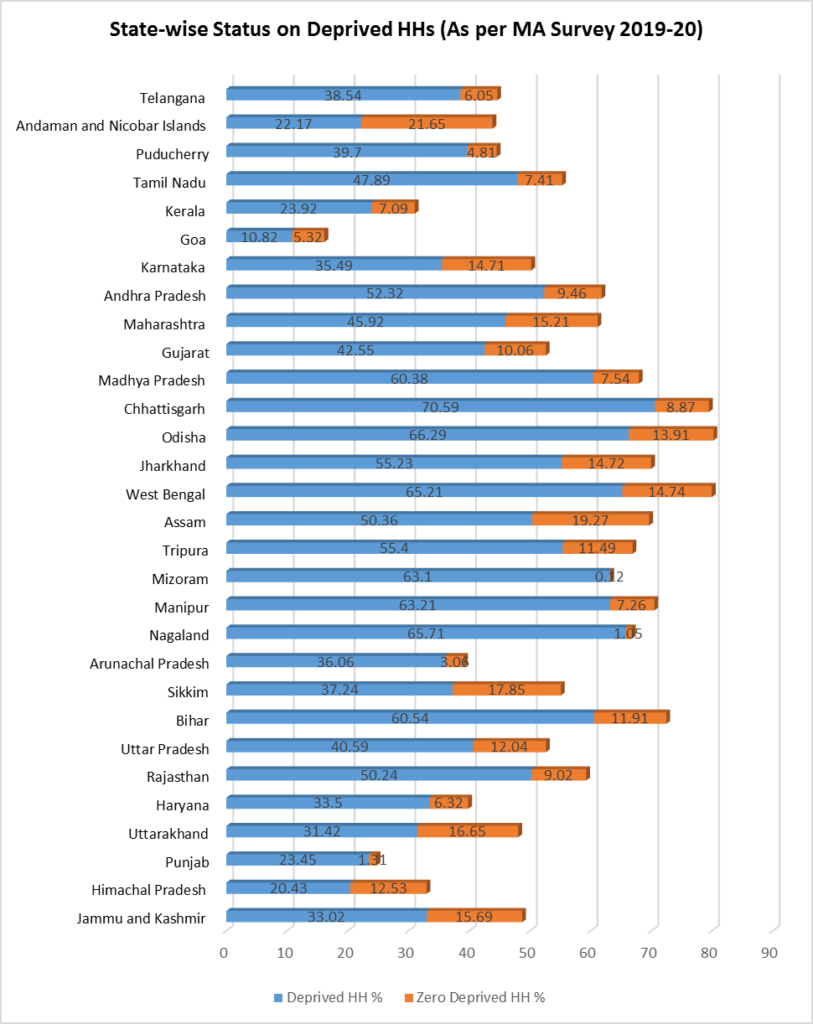
The data presented in Table 2 reveals that many villages in the country are lacking basic facilities. Social development is hindered as essential amenities such as Anganwadi centres (21.22 per cent), primary schools (23.08 per cent), main sources of irrigation (22.72 per cent), drainage facilities (30.64 per cent), public transport (30.89 per cent), all-weather roads (31.56 per cent), drinking water (35.02 per cent), and the Public Distribution System (51.73 per cent) are unavailable in rural India. Moreover, the facilities that contribute to agricultural development and the economic well-being of the rural population, such as community rainwater harvesting systems (60.89 per cent), community ponds used for fisheries (83.06 per cent), poultry and goatery development (88.01 per cent), watershed projects (84.55 per cent), government seed centres (91.6 per cent), and soil testing centres (96.39 per cent), are lacking in villages throughout the country. Additionally, it is worth noting that approximately 59 per cent of villages do not possess their own panchayat bhawans to discharge their administrative functions.
Table 2: No. of villages where the facilities are not available (MA Survey 2019-20)
| Indicator | No. of Villages | % of villages |
| No. of Gram Panchayats where survey completed | 267466 | |
| No. of Villages where survey completed | 648358 | |
| Primary School | 149673 | 23.08 |
| Government Seed Centres | 593884 | 91.60 |
| Watershed Development Project | 548163 | 84.55 |
| Community Rainwater Harvesting System | 394775 | 60.89 |
| Warehouse For Food Grain Storage | 601951 | 92.84 |
| Soil Testing Centres | 624944 | 96.39 |
| Fertilizer Shop | 552825 | 85.27 |
| Main Source of Irrigation | 147298 | 22.72 |
| Livestock Extension Services | 489074 | 75.43 |
| Milk Collection Centre/Milk Routes/ Chilling Centres | 541012 | 83.44 |
| Poultry Development | 570622 | 88.01 |
| Goatary Development | 570588 | 88.01 |
| Piggery Development | 617958 | 95.31 |
| Veterinary Clinic Or Hospital | 577305 | 89.04 |
| Community Ponds Used For Fisheries | 538555 | 83.06 |
| Drinking Water | 227076 | 35.02 |
| All-Weather Road | 204624 | 31.56 |
| Internal Pucca Roads (Cc/ Brick Road) | 209782 | 32.36 |
| Public Transport | 200268 | 30.89 |
| Availability Of Electricity For Domestic Use | 27930 | 4.31 |
| Common Service Centre | 467616 | 72.12 |
| Panchayat Bhawan | 379301 | 58.50 |
| Libraries | 588753 | 90.81 |
| Post Office/Sub-Post Office | 506397 | 78.10 |
| Telephone Services | 91801 | 14.16 |
| Internet/Broadband Facility | 439290 | 67.75 |
| Public Distribution Systems | 335397 | 51.73 |
| Jan Aushadhi Kendra | 609529 | 94.01 |
| Drainage Facilities | 198654 | 30.64 |
| Aanganwadi Centre | 137584 | 21.22 |
Conclusion
The history of planned development in India has witnessed the implementation of various schemes aimed at inclusive development in rural areas. However, many villages in India still lack basic infrastructure facilities. A notable programme in recent times, called ‘Mission Antyodaya’, focuses on identifying the gaps in infrastructure at the village level. This analysis of gaps will assist the government in formulating plans and efficiently utilising financial resources from different schemes to develop infrastructure in villages through a convergence approach. The development of infrastructure facilities will, in turn, contribute to the socio-economic progress of rural communities by improving agriculture and social development resources.
In 2019-20, the Mission Antyodaya survey collected data for the first time from 2.67 lakh gram panchayats, comprising 6.48 lakh villages, shedding light on the infrastructural gaps. The national and state-level data indicates progress in certain areas while highlighting the need for providing basic facilities in rural areas to promote the socio-economic development of the people. Despite 30 years of decentralisation reforms and nearly 75 years of Independence, the gap report and composite index reveal that achieving ‘economic development and social justice’ remains a distant goal.
The Mission Antyodaya survey is an essential tool for identifying and prioritising the needs of rural communities, particularly those living in poverty and deprivation. By collecting comprehensive data on various indicators such as income, education, health, and infrastructure, the survey enables policymakers at national and state levels to design targeted interventions and allocate resources effectively at the local government level. It is suggested that this survey should be conducted once every five years, and the survey data should be utilised mandatorily for the formulation of GPDPs in subsequent years. It is recommended that GPs should align their activities under GPDPs with the gaps identified in the Mission Antyodaya Survey. This will promote inclusive development in rural India through a convergence approach.
Training Programme on Literature Reviews, Citation Databases, & Research Metrics for Rural Development Research
The Centre for Development Documentation & Communication (CDC), National Institute of Rural Development & Panchayati Raj, Hyderabad organised a three-day training programme on ‘Literature Reviews, Citation Databases, & Research Metrics for Rural Development Research’ at the Institute from 15th – 17th April 2024. In total, 43 participants, including research scholars, students and rural development practitioners, representing various organisations and institutes across the country attended the programme.
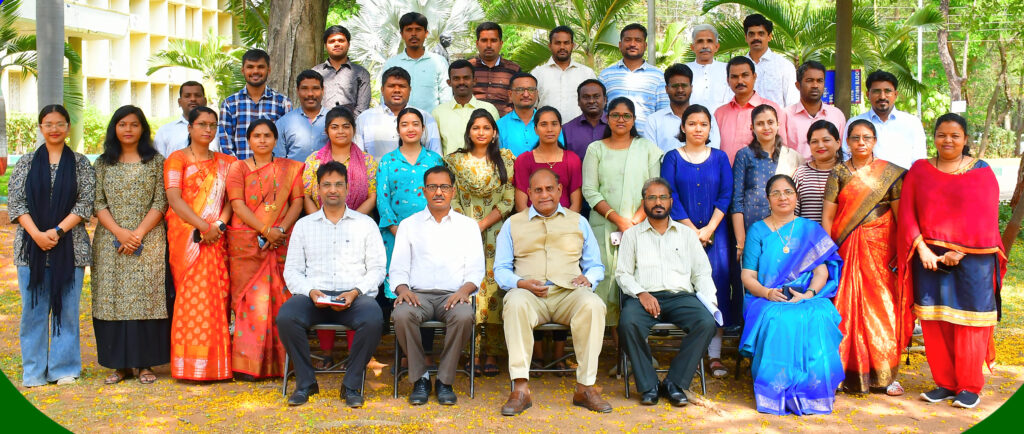
The training programme commenced with an inaugural address by Dr G. Narendra Kumar, IAS, Director General of the Institute. Addressing the participants, the DG emphasised the indispensable role of robust research methodologies in advancing sustainable rural development initiatives.
In his address, Prof. Jyothis Sathyapalan, Head of the CDC & Course Director, offered valuable insights into the applications of social science research within the rural development context.
On the first day, Prof. N.S. Harinarayana, Director of IQAC at the University of Mysore, Mysuru, provided comprehensive guidance on conducting literature reviews and harnessing research metrics effectively in rural development endeavours. Practical strategies for optimising research efficiency through citation management and literature organisation were also shared.
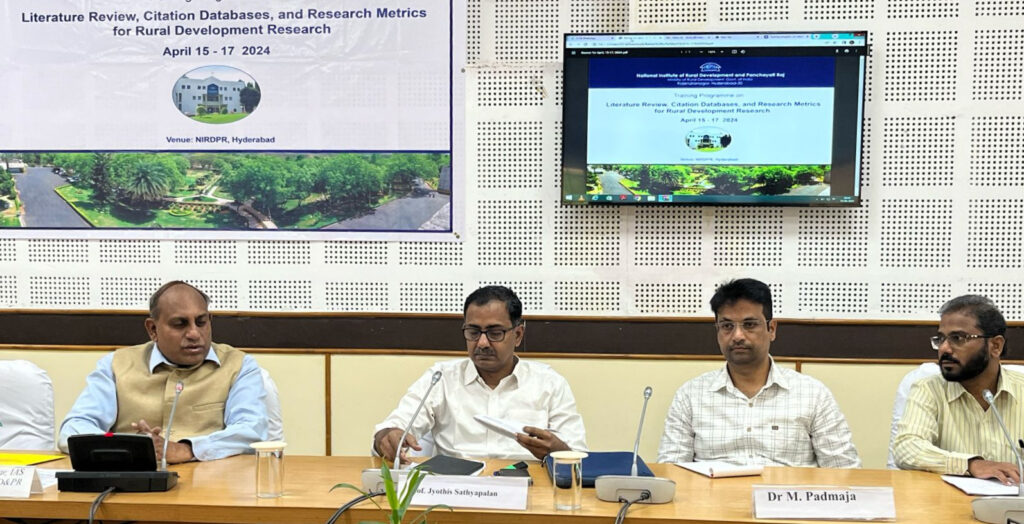
Dr M. Padmaja, Former Senior Librarian at NIRDPR, underscored the significance of literature reviews in shaping and validating research endeavours.
The second day featured Dr Santosha Rathod, Scientist of Agricultural Statistics at ICAR-Indian Institute of Rice Research in Hyderabad, who explored the principles and applications of meta-analysis in agricultural research, with a focus on rural development.
Dr Bhojaraju Gunjal, Chief Library Officer at the Central Library of IIT-Hyderabad in Kandi, Sangareddy, provided an overview of relevant citation databases, facilitating participants’ access to scholarly resources.
On the third day, Dr Murali Prasad, Librarian at CESS in Hyderabad, addressed ethical concerns surrounding plagiarism in academia and research, while discussing effective reference usage and management.
Dr R. Ramesh, Associate Professor &Head, Centre for Rural Infrastructure, NIRDPR, elucidated the fundamentals of academic writing according to the APA Style Guide, crucial for maintaining consistency and clarity in scholarly publications.
Concluding the program, Dr M. V. Ravibabu, Associate Professor & Head (i/c) of the Centre for Information & Communication Technology, NIRDPR and SIRD/ETC Unit, provided guidance on selecting appropriate journals for publication, considering factors such as scope, impact, and audience relevance.
The expert speakers covered a diverse range of topics, providing a comprehensive understanding of literature reviews, citation databases, and research metrics, empowering researchers to contribute meaningfully to rural development initiatives. The training programme concluded successfully, equipping participants with valuable insights, skills, and resources essential for conducting high-quality research in rural development.
Dr Umesha M. L., Assistant Librarian coordinated the workshop with the assistance of Shri P. Sudhakar, Assistant Librarian and other CDC staff.
NIRDPR Observes Ambedkar Jayanti
The National Institute of Rural Development and Panchayati Raj, Hyderabad organised the 134th birth anniversary celebrations of Dr B. R. Ambedkar, popularly known as the father of the Indian Constitution, on 15th April 2024.
Shri E. Ramesh, Senior Hindi Translator and Vice-president of SC/ST Welfare Association, NIRDPR welcomed the guests and staff to the celebrations organised at Dr B. R. Ambedkar Block on the Institute campus.
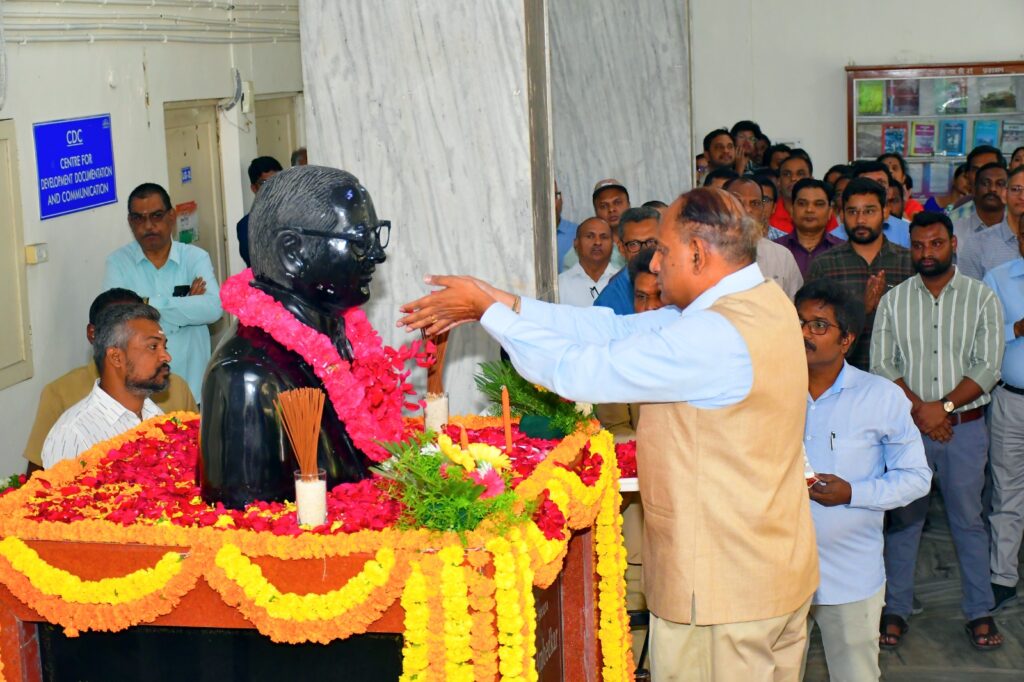
The Chief Guest, Dr G. Narendra Kumar, IAS, Director General, NIRDPR garlanded the bust of Dr B. R. Ambedkar. Addressing the gathering, the DG mentioned the struggles faced by Dr B. R. Ambedkar to pursue higher studies and reach greater heights. He added that as the Chairman of the Drafting Committee, Dr B. R. Ambedkar fortified Indian Constitution by borrowing significant features from the constitutions of other countries.
Further, Shri Manoj Kumar, Registrar & Director (Admin), Shri A S Chakravarthy, Director (Finance) & FA (i/c), Dr P. K. Ghosh, Assistant Registrar (E), faculty members and section heads offered floral tributes.
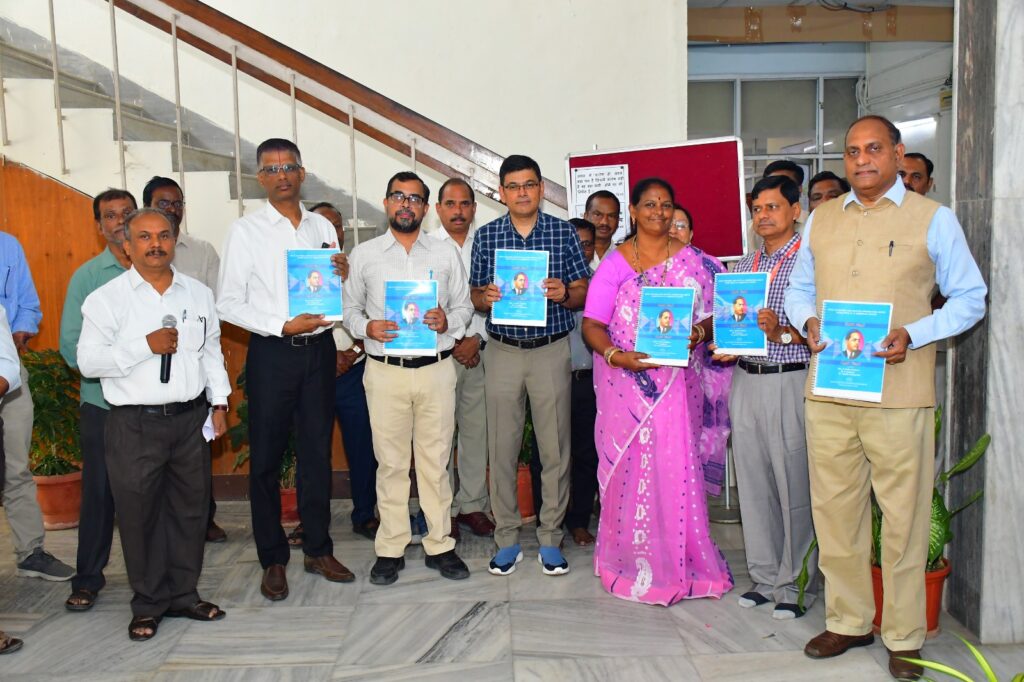
On the occasion, the Director General released a collection of articles titled ‘Socio, Economic and Political Perspectives: 2023-24 based on Dr B. R. Ambedkar’s Works’ complied by Assistant Librarians Smt. K. Radha Madhavi and Shri P. Sudhakar. The programme was attended by Centre heads, faculty members and non-academic staff of the Institute.
Online Workshop on Kanthastha Software at NIRDPR
An online workshop on Kanthastha Software was organised by the Official Language section of the National Institute of Rural Development and Panchayati Raj, Hyderabad on 25th April 2024 at 11.00 am. The workshop was organised with the approval of Dr. G. Narendra Kumar, IAS, Director General and Chairman, Official Language Implementation Committee, NIRDPR.
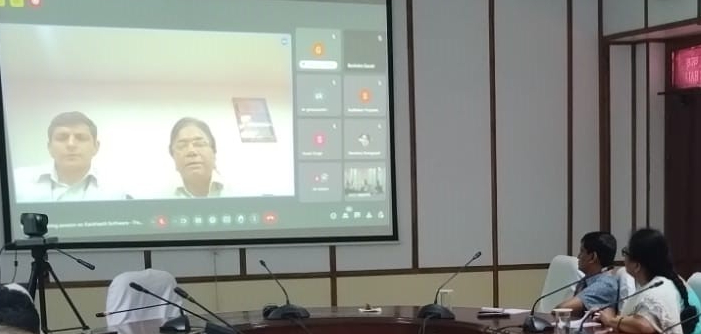
On the occasion, Shri Manoj Kumar, Registrar and Director (Admin), Dr P. K. Ghosh, Assistant Registrar (E), Dr Jyothis Sathyapalan, Professor and Head(CDC), Dr M. V. Ravi Babu, Associate Professor and Head (CICT), Shri Rajesh Kumar Srivastava, Deputy Director and Shri Deepak Kumar, Inspector (Technical), Department of Official Language, Ministry of Home Affairs, New Delhi were present.

Smt. Anita Pandey, Assistant Director (Official Language), NIRDPR welcomed the participants and introduced the guest speakers Shri Deepak Kumar, Inspector (Technical) and Shri Rajesh Kumar Srivastava, Deputy Director, Official Language, Ministry of Home Affairs, New Delhi.
Shri Deepak Kumar, Inspector (Technical) explained in detail the process of Hindi translation using Kanthastha software, such as registration of users and uploading of content through user ID logins. He also explained the process of translation from English to Hindi and vice versa. A total of 80 officers/staff working in NIRDPR headquarters in Hyderabad and also from its Guwahati, Patna and Delhi Centres joined and benefited from the training. The participants opined that the workshop was beneficial for them. During the interaction, Shri Deepak Kumar Inspector, Department of Official Language resolved the doubts of the participants. The workshop concluded with a vote of thanks.
CICT, NIRDPR Organises Training Programme on e-Office
The Centre for Information Communication and Technology (CICT) of the National Institute of Rural Development and Panchayati Raj, Hyderabad organised a training programme on e-Office on 24th April 2024. The primary objective of the training programme was to bridge the skill gaps observed among e-Office users, enabling them to use the software efficiently. It aimed to instil the necessary knowledge and skills required for e-Office governance. The programme witnessed the active participation of 30 in-house members.
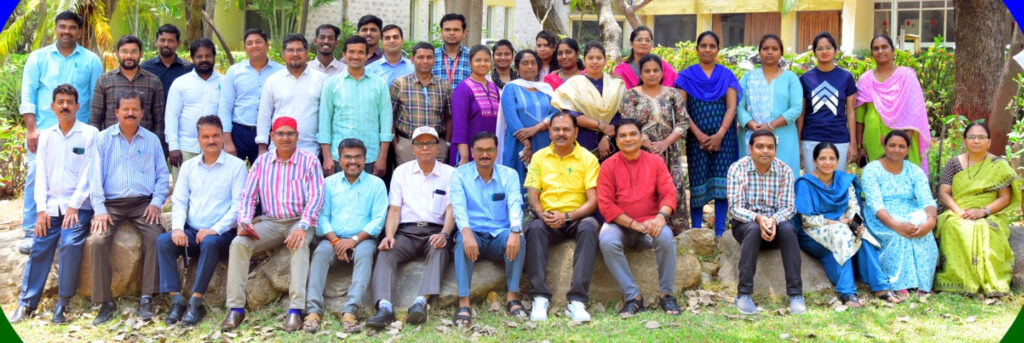
The event commenced with a welcome address by Dr M. V. Ravi Babu, Associate Professor & Head(i/c), CICT. He also introduced the programme, emphasising its significance in bridging the skill gaps among e-Office users.
Shri G. Praveen, Data Processing Assistant (DPA) and Shri Upender Rana, System Analyst, provided an overview of the basic functions of e-Office, ensuring a clear understanding of the software’s capabilities among the participants. Shri G Praveen conducted a live demonstration, elaborating on various features and functionalities of e-Office. The interactive sessions throughout the programme were handled by Shri G. Praveen and Shri Upender Rana, who actively engaged with the participants, addressing their queries and clarifying doubts. Shri M. Sundara Chinna, DPA explained the procedures to acquire and utilise the VPN service from NIC, and access the e-office on other than NIC networks. Shri Sunil K. Jha, DPA also contributed to the success of the programme.
The training programme focused on several key features of e-Office, including:
- Receipt handling
- Differentiating between the ‘Put file’ and ‘Attach file’ functions
- Attachment of correspondence
- File handling
- File creation (SFS/Non-SFS)
- Use of green and yellow note sheets
- Draft handling
- Discussion on frequent day-to-day issues
- Utilisation of DSC (Digital Signature Certificate) in e-Office
- Difference between ‘Linking; and ‘Attachments’
- Knowledge Management System (KMS) utilisation
- E-Office MIS Reports
These key features were thoroughly covered during the programme to ensure that participants gained practical knowledge and skills to enhance their e-Office usage.
The participants opined that the training programme on e-Office was highly beneficial as it addressed skill gaps, provided valuable insights into e-Office governance procedures, and equipped participants with the necessary knowledge and skills. The interactive sessions and live demonstration facilitated effective learning and ensured participants were well-prepared to utilise e-Office efficiently in their respective departments.
Shri G. Praveen and Shri Upender Rana coordinated the training programme.
